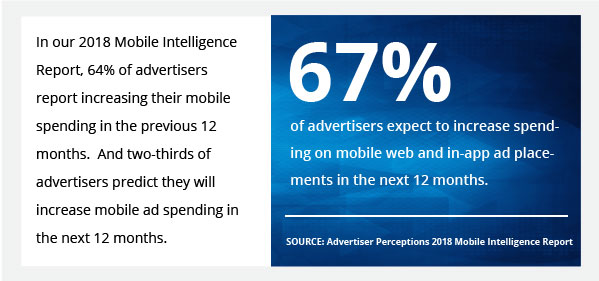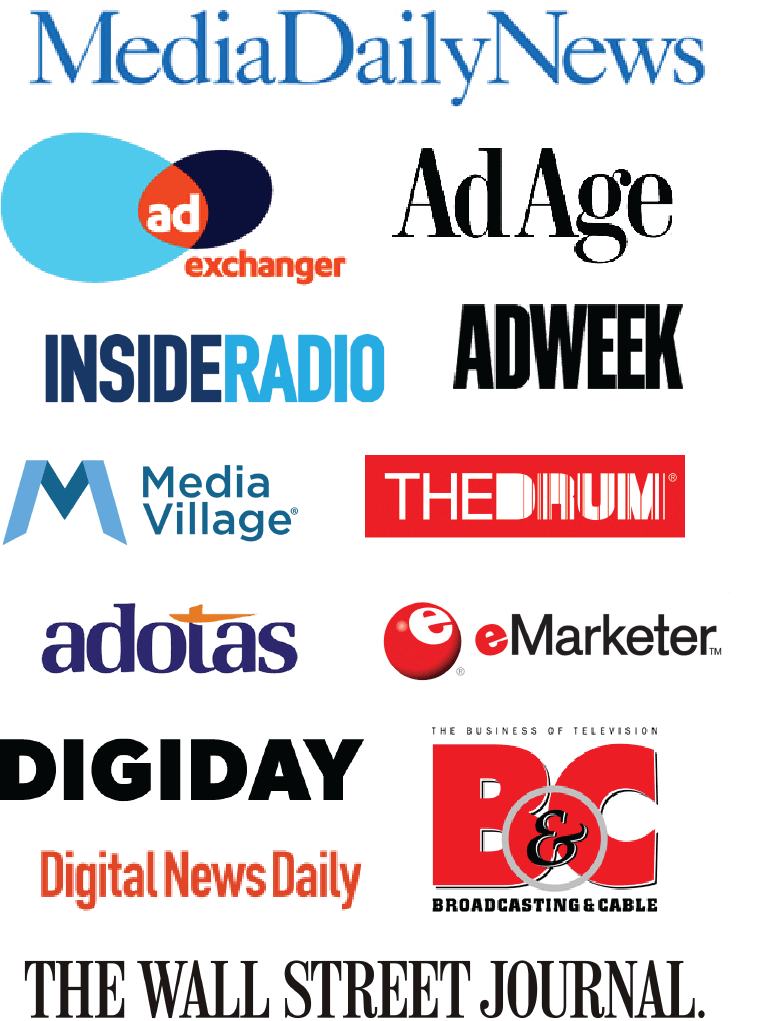The holy grail for advertisers is reaching the right person with the right message at the right time. The smartphone gives advertisers the best tool to meet that objective, consequently resulting in the movement of more dollars to reach consumers on their personal devices. In our 2018 Mobile Intelligence Report, nearly two-thirds of advertisers report increasing their mobile spending in the previous 12 months.

It is this increase in spending that is spurring the shift from desktop to mobile, as the Interactive Advertising Bureau points out in their most recent ad spending report. With the one-to-one opportunity that smartphones offer, mobile advertising has the potential to be the impetus for advertising as we know it to evolve. By providing insights into consumers’ physical and digital activities throughout the day, mobile may offer the best insights for advertisers to create the most relevant and effective advertising.
Still, major challenges remain. Privacy is a major issue. Security breaches at digital platforms and data firms, and legal efforts like the EU’s GDPR continue keep privacy top of mind for consumers and advertisers alike. Nor is mobile immune from the brand safety, fraud, and viewability challenges that have been the center of the advertising industry’s attention for the past year. And just because mobile offers personalization doesn’t necessarily lead to innovation. Advertisers in our study continue to think within the box of the current advertising model.
With the potential to be more relevant, the challenge may actually be speaking to consumers in a more relevant and personal way. Growth in live stream and audio advertising underscores advertisers’ optimism around the value of mobile. Across platforms, advertisers continue to focus on video and mobile with significant past year budget increases. Nearly one-fifth of those mobile video budgets (17%) are now moving toward live streaming content, which offers the opportunity to reach consumers in real-time wherever they may be – an important differentiator as more TV viewing becomes on-demand.
Similarly, 62% of advertisers report using mobile audio advertising in 2017 – a 13% increase from 2016. This growth in mobile advertising occurred despite the fact that just 44% of advertisers indicate that audio is important in their media mix. A clear example where mobile benefits a medium that might not otherwise attract advertisers. While there is much optimism for mobile, the advertising industry’s displeasure with measurement once again is apparent. Few advertisers feel that measurement companies are doing a good job assessing mobile behavior. As advertisers follow technology, both of which evolve faster than measurement, mobile presents significant opportunities for firms that can solve the many challenges that remain.
Download the report Executive Summary HERE…

